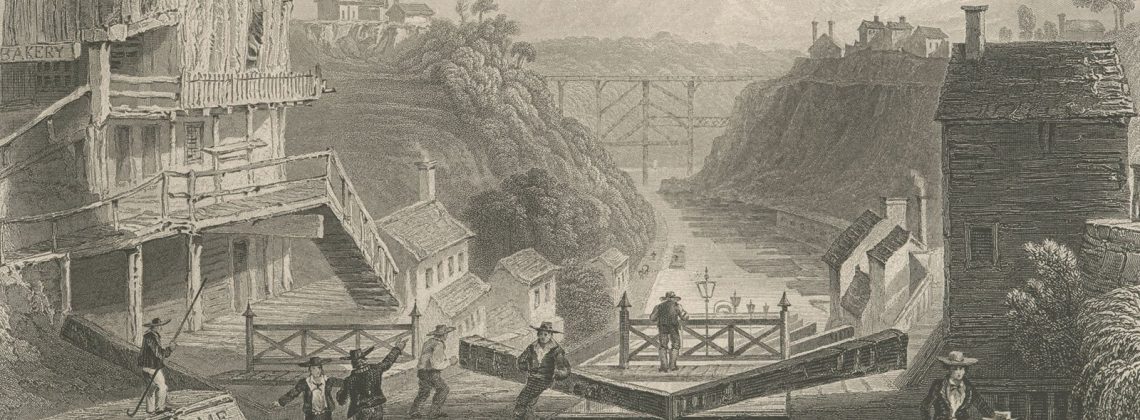

The debate in the Senate continues to rage over Joe Biden’s infrastructure plan. GOP senators resist the plan for two reasons.
First, they do not want Biden to soak corporations and the rich to pay for his proposed projects. Second, they believe the president has defined “infrastructure” too broadly. Most Republicans think infrastructure development should be limited to the fixing of roads and bridges. For Biden and the Democrats, however, infrastructure extends to the funding of broadband internet, electric car charging stations, green technology, care for the elderly, and the improvement of schools (including community colleges), hospitals, and federal buildings.
By asking the rich to do their part, and by expanding the definition of infrastructure beyond the construction and maintenance of roads and bridges, Biden stands on solid historical footing. The United States has a long history of fulfilling its promise through active government and infrastructure planning. Many of the founding fathers included such efforts at social design under the broad category of “improvements.”
In his first annual message to Congress, published on December 6, 1825, President John Quincy Adams laid out a bold plan for infrastructure development. “Roads and canals are among the most important means of improvement,” Adams wrote. But the well-educated son of an American revolutionary also refused to separate the nation’s communication and travel networks from what he called “moral, political, and intellectual” improvements.
Adams went so far as to say that advancements in these areas are social “duties” and “obligations” assigned to all Americans by the “Author of Our Existence.” As President of the United States, he believed that he had a “sacred and indispensable” responsibility to “the progressive improvement of the condition of the governed.” Anything short of exercising this responsibility was “criminal and odious.” For Adams, God was on the side of infrastructure.
While roads, bridges, and canals were essential to sustain a growing American economy in 1825, Adams realized that improvements to the nation’s physical infrastructure must always be connected to its mission of cultivating informed citizens. “Among the first, perhaps the very first, instrument for the improvement of the condition of men,” Adams wrote, is “knowledge.” He thus called on Congress to fund “public institutions” and “seminaries of learning” that would promote the “comforts” and “enjoyments of human life.” His speech referenced George Washington’s idea for a national university and Thomas Jefferson’s recent founding of the University of Virginia, the country’s first public university.
As part of their “sacred debt” to one another, Adams believed those committed to the “common cause” of the United States should promote what today we call the liberal arts. The funding of post roads, new standards of weights and measures, the army and navy, manufacturing, and agricultural improvement must always exist alongside the growth of the “elegant arts, the advancement of literature, and the progress of the sciences, ornamental and profound.” In Adams’ view, the strengthening of the economy through federally funded infrastructure programs was part of a larger democratic project that included support for the strengthening of an American mind formed by timeless questions about human flourishing and an evidence-based approach to the world.
Adams concluded his speech by announcing that “the spirit of improvement is abroad upon the earth. It stimulates the hearts and sharpens the faculties.” He reminded Congress that American liberty is inseparable from communal obligations. The same “Creator” responsible for the “superior excellence of our political institutions” also calls citizens to use their liberty “to ends of beneficence, to improve the condition of himself and his fellow men.” To do otherwise, Adams warned, would be “to cast away the bounties of Providence” and “doom ourselves to perpetual inferiority.”
So how might John Quincy Adams assess Joe Biden’s March 2021 unveiling of his American Jobs Plan in Pittsburgh, Pennsylvania? Likely with mixed feelings.
On the one hand, the sixth president of the United States would probably praise his successor’s effort to “strengthen the backbone” of the nation through government spending on transportation and infrastructure development. Since Adams had an expansive vision of internal improvements that went well beyond roads and bridges, as well as a robust commitment to American innovation and progress, he would see the logic behind future-looking investments in electric cars, clean water, green manufacturing, and broadband internet. As a reformer and a future member of the Whig Party, Adams might welcome the opportunity to spend federal money on elder-care and education.
On the other hand, Adams would likely be disappointed in Biden’s failure to link his spending to a moral vision of the Republic. He would push Biden to think about rail lines and electric cars as a way of helping Americans make human connections in a nation where people are growing increasingly isolated from one another, even before the outbreak of the COVD-19 pandemic.
Adams would urge Biden to be more explicit in connecting his funding for the internet, schools, and community colleges to the education of men and women who will carry American ideals to future generations. He would wish Biden had linked his commitment to care for the elderly, fight climate change, and improve hospitals and water facilities to our civic duties as guardians of the republic.
Yet, even if Biden took Adams’ vision seriously, I doubt it would do much to convince the Republicans in the Senate. Most of them long ago abandoned the original republican vision of the founding generation that Adams spent his entire political career defending and advancing—even as they continue to claim these founding ideals as their own.
John Fea is Executive Editor of Current